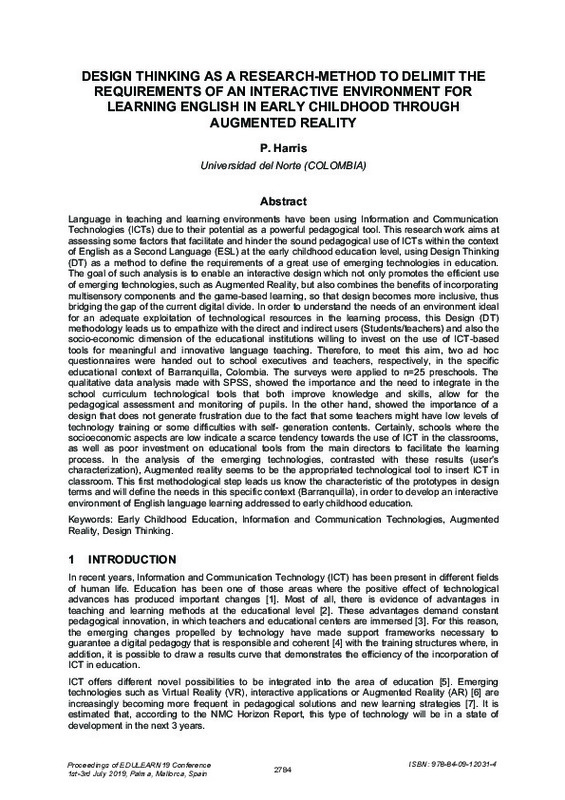JavaScript is disabled for your browser. Some features of this site may not work without it.
Buscar en RiuNet
Listar
Mi cuenta
Estadísticas
Ayuda RiuNet
Admin. UPV
Design thinking as a research-method to delimit the requirements of an interactive environment for learning english in early childhood through augmented reality
Mostrar el registro completo del ítem
Harris-Bonet, P. (2019). Design thinking as a research-method to delimit the requirements of an interactive environment for learning english in early childhood through augmented reality. EDULEARN Proceedings (Internet). 2784-2793. https://doi.org/10.21125/edulearn.2019.0757
Por favor, use este identificador para citar o enlazar este ítem: http://hdl.handle.net/10251/155962
Ficheros en el ítem
Metadatos del ítem
| Título: | Design thinking as a research-method to delimit the requirements of an interactive environment for learning english in early childhood through augmented reality | |
| Autor: | Harris-Bonet, Paola | |
| Fecha difusión: |
|
|
| Resumen: |
[EN] Language in teaching and learning environments have been using Information and Communication Technologies (ICTs) due to their potential as a powerful pedagogical tool. This research work aims at assessing some factors ...[+]
|
|
| Palabras clave: |
|
|
| Derechos de uso: | Reserva de todos los derechos | |
| Fuente: |
|
|
| DOI: |
|
|
| Editorial: |
|
|
| Versión del editor: | https://doi.org/10.21125/edulearn.2019.0757 | |
| Título del congreso: |
|
|
| Lugar del congreso: |
|
|
| Fecha congreso: |
|
|
| Tipo: |
|








